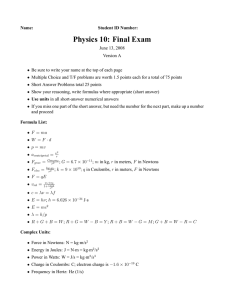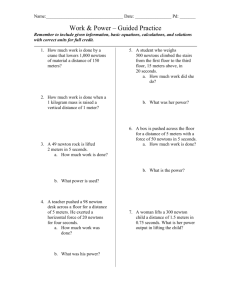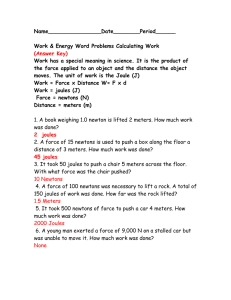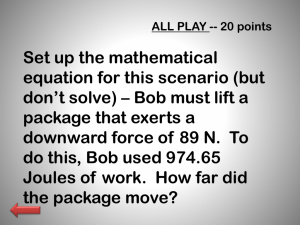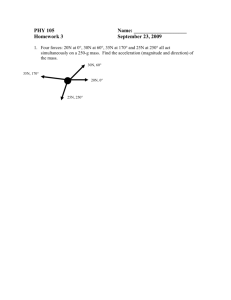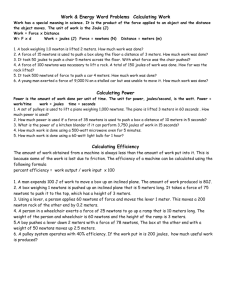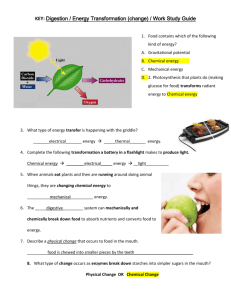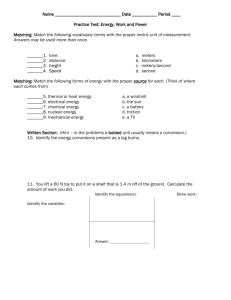Calculate amount of work - worksheet File
advertisement
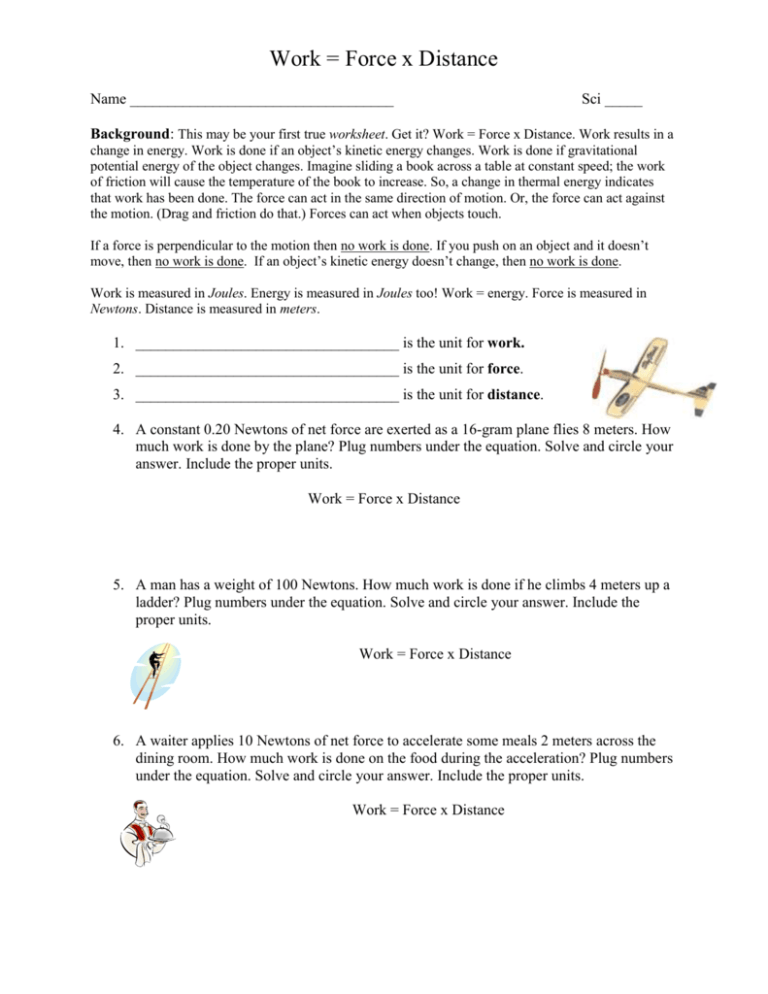
Work = Force x Distance Name ___________________________________ Sci _____ Background: This may be your first true worksheet. Get it? Work = Force x Distance. Work results in a change in energy. Work is done if an object’s kinetic energy changes. Work is done if gravitational potential energy of the object changes. Imagine sliding a book across a table at constant speed; the work of friction will cause the temperature of the book to increase. So, a change in thermal energy indicates that work has been done. The force can act in the same direction of motion. Or, the force can act against the motion. (Drag and friction do that.) Forces can act when objects touch. If a force is perpendicular to the motion then no work is done. If you push on an object and it doesn’t move, then no work is done. If an object’s kinetic energy doesn’t change, then no work is done. Work is measured in Joules. Energy is measured in Joules too! Work = energy. Force is measured in Newtons. Distance is measured in meters. 1. ___________________________________ is the unit for work. 2. ___________________________________ is the unit for force. 3. ___________________________________ is the unit for distance. 4. A constant 0.20 Newtons of net force are exerted as a 16-gram plane flies 8 meters. How much work is done by the plane? Plug numbers under the equation. Solve and circle your answer. Include the proper units. Work = Force x Distance 5. A man has a weight of 100 Newtons. How much work is done if he climbs 4 meters up a ladder? Plug numbers under the equation. Solve and circle your answer. Include the proper units. Work = Force x Distance 6. A waiter applies 10 Newtons of net force to accelerate some meals 2 meters across the dining room. How much work is done on the food during the acceleration? Plug numbers under the equation. Solve and circle your answer. Include the proper units. Work = Force x Distance Work = Force x Distance 7. The meals are heavy; they have a weight of 5 Newtons. The waiter applies a force and holds the food steady as he walks forward. How much work is done on the food as the waiter moves forward at constant velocity? Ignore friction and drag. Plug numbers under the equation. Solve and circle your answer. Include the proper units. Work = Force x Distance 8. Look at the waiter situation above and this time consider drag doing work on the dish. What kind of tiny energy increase would occur in the dish if the man walked forward at constant velocity in the presence of drag? 9. A kitten weighs 40 N. You use 50 N to slide him across the kitchen floor for a distance of 2 m. How much work was done? Work = Force x Distance 10. A boy kicks a 430-gram soccer ball with 100 N of force. He makes contact for the ball for a distance of 0.25 meters. After the kick, the ball rolls a distance of 9 meters. How much work was done on the ball? Be careful. Work = Force x Distance
